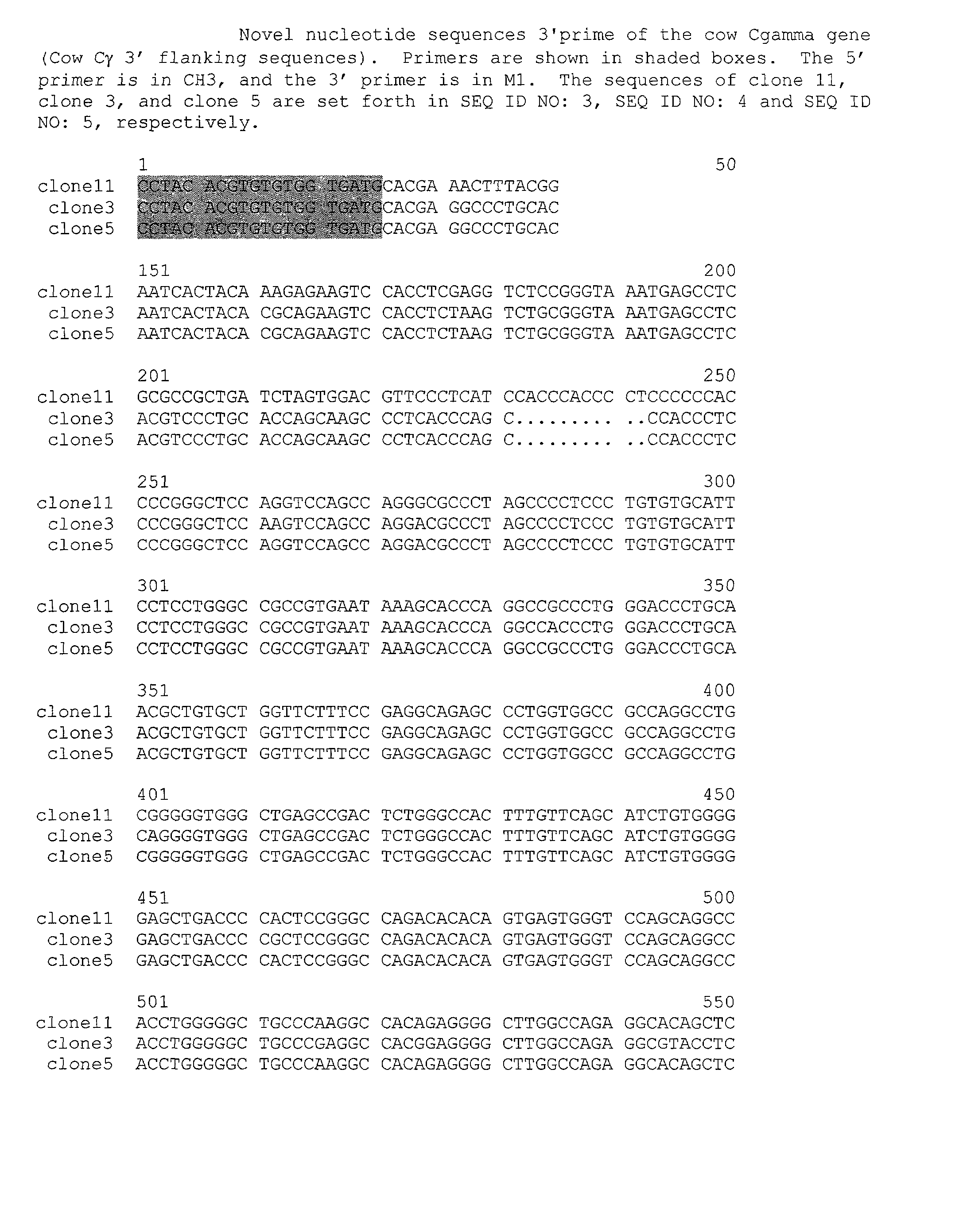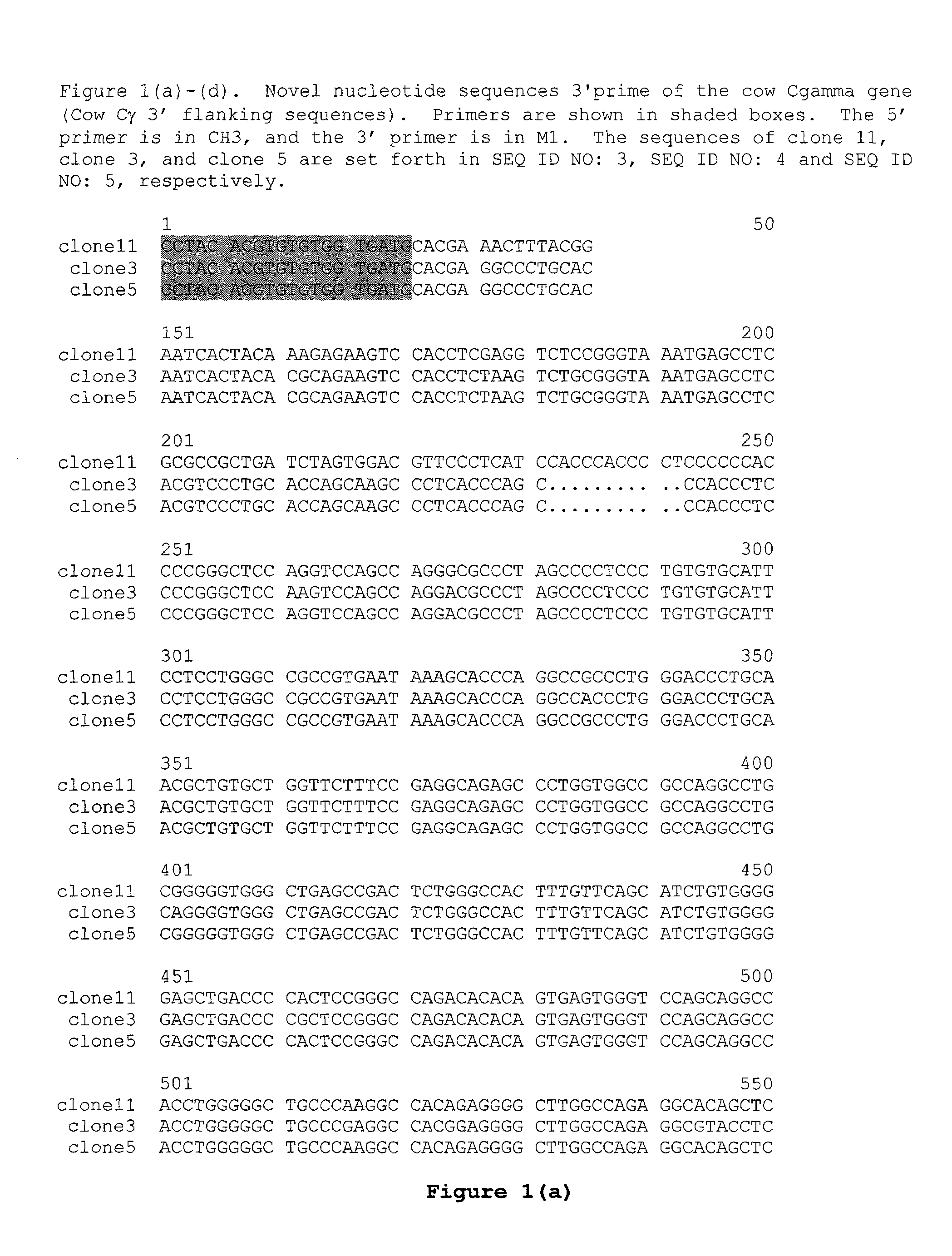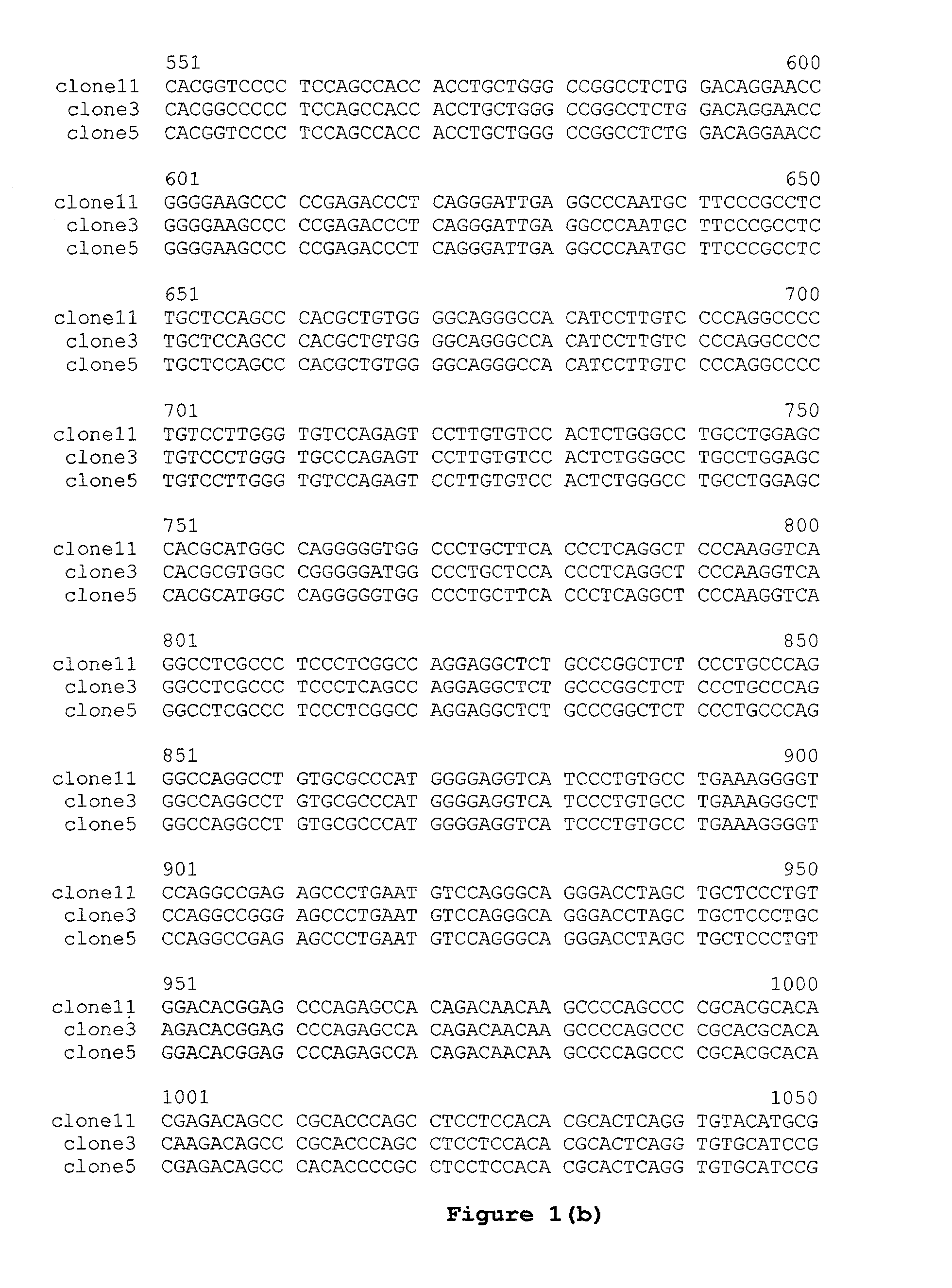Production of humanized antibodies in transgenic animals
a technology of humanized antibodies and transgenic animals, which is applied in the direction of peptides, drug compositions, and injected cells, can solve the problems that the amount of each individual immunoglobulin molecule in the preparation may be too low to solicit immune response, and the gene rearrangement does not play a significant role in the generation of antibody diversity
- Summary
- Abstract
- Description
- Claims
- Application Information
AI Technical Summary
Benefits of technology
Problems solved by technology
Method used
Image
Examples
example 2
A Vector for Replacing the Rabbit Endogenous C.gamma. Gene Segment with the Human C.gamma.1 Segment
[0134] Genomic DNA is isolated from rabbit fetal fibroblasts of an a2-homozygous rabbit. The DNA sequence upstream of rabbit C.gamma. (i.e., the 5' flanking sequence of rabbit C.gamma.) is amplified by PCR using the following primers:
3 5' taattatgcggccgcCTTCAGCGTGAACCACGCCCTC 3' (SEQ ID NO: 39) 5' GTCGACGCCCCTCGATGCACTCCCAGAG 3' (SEQ ID NO: 40).
[0135] with a 5' NotI site and
[0136] The DNA sequence downstream of rabbit C.gamma. (i.e., the 3' flanking sequence of rabbit C.gamma.) is amplified with the following primers:
4 5' ggtaccCTCTCCCTCCCCCACGCCGCAGC 3' (SEQ ID NO: 41) with a 5' KpnI site and 5' atatctcagaACTGGCTGTCCCTGCTG-TAGTACACGG 3' (SEQ ID NO: 42) with a 5' XhoI site.
[0137] Human genomic DNA is isolated from human peripheral blood lymphocytes. The DNA fragment encoding human C.gamma.1 is amplified using the following primers:
5 5' GTCGACACTGGACGCTGAACCTCGCGG 3' (SEQ ID NO: 43) and...
example 3
A Vector for Replacing the Rabbit Endogenous C.kappa. Gene Segment with the Human C.kappa. Segment
[0139] Genomic DNA was isolated from rabbit fetal fibroblasts of a b5-homozygous rabbit. The DNA sequence upstream of rabbit C.kappa.1 (i.e., the 5' flanking sequence of rabbit C.kappa.1) was amplified by PCR using the following primers:
6 5' gcggccgcTGGCGAGGAGACCAAGCTGGAGATCAAACG 3' (SEQ ID NO: 45) with a 5' NotI site 5' GTCGACGCAGCCCAAAGCTGTTGCAATGGGGCAGCG 3' (SEQ ID NO: 46).
[0140] The DNA sequence downstream of rabbit C.kappa.1 (i.e., the 5' flanking sequence of rabbit C.kappa.1) was amplified with the following primers:
7 5' atatggtaccGCGAGACGCCTGCCAGGGCACCGCC 3' (SEQ ID NO: 47) 5' GGATCCCGAGCTTTATGGGCAGGGTGGGGG 3' (SEQ ID NO: 48).
[0141] Human genomic DNA was isolated from human peripheral blood lymphocytes. The DNA fragment encoding human C.kappa. was amplified using the following primers:
8 5' ATATGTCGACCTGGGATAAGCATGCTGTTTTCTGTCTGTCCC 3' (SEQ ID NO: 49) 5' CTAGGTACCAGCAGGTGGGGGCACTT...
example 4
Replacement of the Endogenous C.gamma. and C.kappa. Gene Segments in Rabbit Fetal Fibroblasts with the Corresponding Human Gene Segments
[0143] Rabbit fetal fibroblast cells are prepared by standard methods. After one passage, fibroblasts are transfected with 5 .mu.g of the NotI-linearized targeting vector as shown in FIG. 5a for C.gamma. or FIG. 51b for C.kappa., and are seeded in 96-well plates (2.times.10.sup.3 cells / well). After a positive selection with 600 .mu.g / ml G418 and a negative selection with 200 nM FIAU, resistant colonies are replica-plated to two 96-well plates for DNA analysis and cryopreservation, respectively. PCR and / or Southern blot analysis is performed to identify cells with the human C.gamma.1 gene segment integrated in the genome. The cells having the integrated human C.gamma.1 gene are used in rabbit cloning as described in Example 5.
PUM
| Property | Measurement | Unit |
|---|---|---|
| Current | aaaaa | aaaaa |
| Electric potential / voltage | aaaaa | aaaaa |
| Electric potential / voltage | aaaaa | aaaaa |
Abstract
Description
Claims
Application Information
 Login to View More
Login to View More - R&D
- Intellectual Property
- Life Sciences
- Materials
- Tech Scout
- Unparalleled Data Quality
- Higher Quality Content
- 60% Fewer Hallucinations
Browse by: Latest US Patents, China's latest patents, Technical Efficacy Thesaurus, Application Domain, Technology Topic, Popular Technical Reports.
© 2025 PatSnap. All rights reserved.Legal|Privacy policy|Modern Slavery Act Transparency Statement|Sitemap|About US| Contact US: help@patsnap.com



